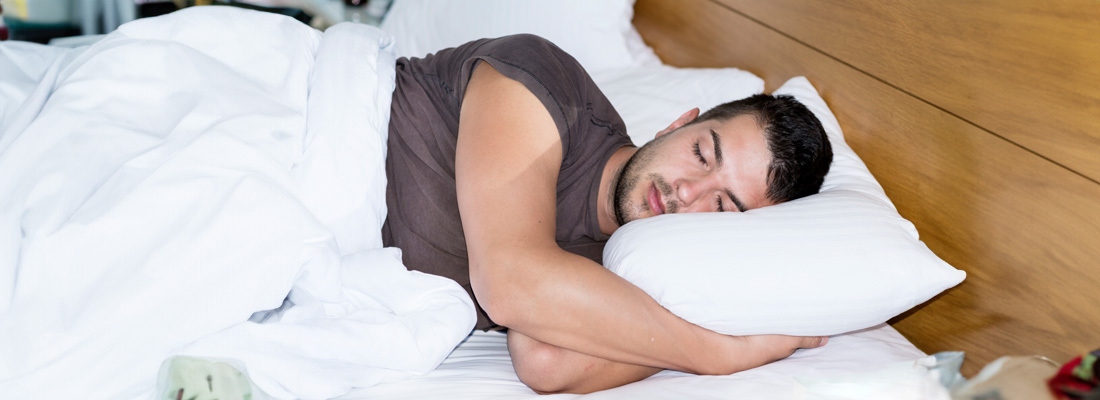
Positional sleep apnea occurs when a person’s breathing repeatedly stops and starts during sleep, primarily when they are lying on their back. This condition is a common subtype of obstructive sleep apnea (OSA) that is closely related to body positioning. Additionally, one can significantly affect it by changing the lying positions or postures.
Moreover, repeated interruptions in breathing occur during sleep as a prevalent sleep disorder called OSA (obstructive sleep apnea). In addition to this, it can manifest in various forms and can be recognized by various signs. One specific type is positional obstructive sleep apnea, directly associated with the sleeping individual’s position.
Furthermore, positional sleep apnea typically occurs when a person is lying on their back, causing the airway to become partially or completely blocked. This blockage may contribute to the collapse of soft tissues in the throat. This position-dependent phenomenon leads to disrupted sleep, frequent awakenings, and a decrease in oxygen levels, contributing to a range of health complications. This guide explores everything related to POSA and the crucial associated factors.
These factors may include signs, symptoms, risk factors, and effective management strategies. To understand the context and explore relevant insights into it, keep scrolling until the very end and help improve sleep quality or overall well-being for those affected by this condition.
Understanding Positional Sleep Apnea—An In-Depth Overview
Sleep apnea is characterized by repeated interruptions in breathing during sleep, and the most common type is Obstructive Sleep Apnea (OSA). OSA occurs when the muscles of the upper airway, including the tongue and soft tissues, relax excessively during sleep. Furthermore, the muscles in this relaxation can partially or completely obstruct the airflow, and this obstruction can be initiated by the sleeping position.
The relaxation may result in temporary pauses in breathing. These abrupt breathing pauses are known as apnea episodes. Additionally, these episodes typically last for a few seconds, during which oxygen levels drop, prompting the sympathetic nervous system to increase heart rate and blood pressure.
In addition to this, breathing eventually resumes after a while. However, it is often accompanied by loud snorting, gasping, or persistent snoring. Positional Obstructive Sleep Apnea (POSA) is a specific subtype of OSA where most episodes are triggered by the sleeper’s position. Additionally, sleeping on the back, for instance, can cause the airway to narrow or collapse due to gravity’s effect on the relaxed tissues.
Therefore, this aspect significantly increases the likelihood of apnea episodes. Identifying and managing positional OSA involves understanding the impact of sleep position on breathing and exploring strategies to maintain healthier sleep postures.
Signs Indicating Positional Sleep Apnea
Identifying the symptoms of POSA can be challenging, as many of them occur during sleep, making self-detection difficult. Therefore, it often takes years for individuals to recognize their symptoms and seek medical advice. Additionally, individuals may realize the symptoms through persistent point outs by others residing with them. Some commonly observed signs may include;
Excessive Daytime Fatigue and Lethargy:
OSA is a leading cause of chronic daytime excessive sleepiness. Individuals with OSA often struggle to stay awake during mundane activities such as reading or watching television. In addition to this, many rely on persistent intake of caffeine to counteract this constant fatigue.
Morning Discomfort and Headaches:
Common morning symptoms associated with POSA may include waking up with headaches, a dry mouth, or frequent urges to urinate. Morning headaches can be severe that may last for hours, and often occur regularly.
Witnessed Snoring or Breathing Pauses:
Family members, caregivers, or sleep partners are often the first to notice the symptoms of positional sleep apnea, specifically through loud snoring. They might report loud, disruptive snoring, or observe moments where the person stops breathing, chokes, gasps, or snorts during sleep.
Finally, a key indicator of the condition is that these symptoms are notably worse or more frequent when sleeping on the back. Sleep studies, known as polysomnography, can help diagnose POSA by monitoring breathing patterns and body position throughout the night.
Risk Factors Involving Positional Sleep Apnea
There are several factors that may increase the likelihood of developing positional sleep apnea. Certain prevailing or pre-existing conditions of a body may get triggered through these factors. However, these risk factors can be forestalled through preventive care and informed decision making. Commonly observed factors contributing to POSA are briefly enlisted below;
- Anatomical Features
A naturally narrow airway, a large tongue, or enlarged tonsils can make it easier for the airway to become blocked in certain positions.
- Age and Gender
OSA is more common in older adults and is generally more prevalent in men. Even though it can affect individuals of any age or gender, yet major number of cases reported are older men.
- Alcohol and Sedatives
The use of substances that relax the muscles, such as alcohol or sedatives, can exacerbate symptoms by further promoting airway collapse.
- Obesity
Excess weight, particularly around the neck, can increase the likelihood of airway collapse during sleep. Additionally, excessive weight gain can trigger sleep apnea and vice versa.
Management and Treatment Strategies for Positional Obstructive Sleep Apnea
There are several methods and management strategies that may impose a positive impact on sleep health. Here are some of the most observed and noteworthy management strategies;
- Positional Therapy: This approach aims to encourage sleeping in a position other than on the back. It promotes side-sleeping. Special devices like positional pillows, belts, or alarms can help keep a person sleeping on their side.
- Lifestyle Changes: Weight loss, regular exercise, and avoiding alcohol or sedatives before bedtime can help reduce the severity of the condition.
- Continuous Positive Airway Pressure (CPAP): For those with moderate to severe OSA, CPAP therapy can work well. It helps in supplying constant air pressure to keep the airway open.
- Oral Appliances: Custom-fitted devices that help keep the airway open by repositioning the jaw or tongue can be effective. In specific cases, like mild to moderate POSA, oral appliances can contribute positively to improving sleep.
- Surgery: In severe cases, surgical interventions may be necessary to remove or reduce excess tissue in the airway. However, if other treatments have failed, or all attempts have been unsuccessful, only then can this approach be opted for.
Preventive Measures and Self-Care Tips
Adopting good sleep hygiene practices may work immensely in improving positional sleep apnea. These practices may include maintaining a regular sleep schedule, creating a comfortable sleep environment, and using pillows that promote side-sleeping. All these and more can help in reducing signs and minimizing the adverse symptoms.
Furthermore, regular monitoring and follow-ups with a healthcare provider to assess treatment effectiveness can also be beneficial. It may also help in making necessary adjustments when required.
Final Thoughts
POSA is a condition that specifically ties sleep apnea episodes to body positioning. It is specifically related to sleeping on the back that triggers airway blockage. Understanding and recognizing positional sleep apnea is crucial because its management may differ from other forms of obstructive sleep apnea.
Additionally, it can have serious health implications if left untreated, several effective strategies are available to help manage and alleviate its symptoms. By incorporating positional therapy, lifestyle changes, and other targeted treatments, individuals with POSA can significantly improve their sleep health. Proactive approaches and timely management may aid in improving sleep quality and overall health. Consulting with healthcare professionals for proper diagnosis and treatment is key to managing POSA and its associated risks.

